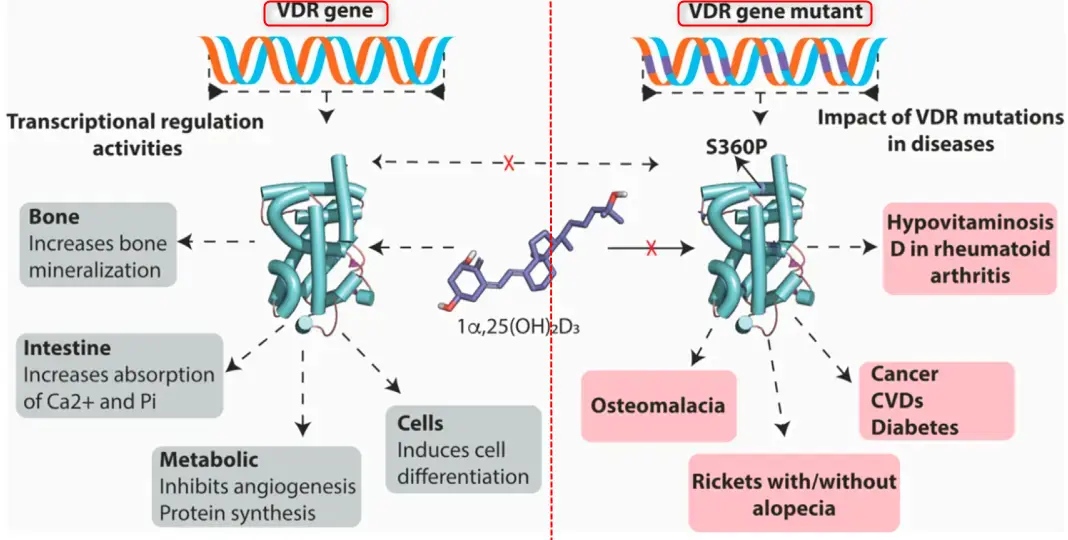The Vitamin D Receptor is activated by several Traditional Chinese Medicines
Vitamin D receptor by traditional Chinese medicines and bioactive compounds: potential therapeutic applications in VDR-dependent diseases
Front Pharmacol. 2024 Jan 22. doi: 10.3389/fphar.2024.1298181
Minghe Yao,# 1 , 2 , † Patrick Kwabena Oduro,# 3 , † Ayomide M. Akintibu, 4 and Haifeng Yancorresponding author 5 ,*

The Vitamin D receptor (VDR) is a crucial nuclear receptor that plays a vital role in various physiological functions. To a larger extent, the genomic effects of VDR maintain general wellbeing, and its modulation holds implications for multiple diseases. Current evidence regarding using vitamin D or its synthetic analogs to treat non-communicable diseases is insufficient, though observational studies suggest potential benefits. Traditional Chinese medicines (TCMs) and bioactive compounds derived from natural sources have garnered increasing attention. Interestingly, TCM formulae and TCM-derived bioactive compounds have shown promise in modulating VDR activities. This review explores the intriguing potential of TCM and bioactive compounds in modulating VDR activity. We first emphasize the latest information on the genetic expression, function, and structure of VDR, providing a comprehensive understanding of this crucial receptor. Following this, we review several TCM formulae and herbs known to influence VDR alongside the mechanisms underpinning their action. Similarly, we also discuss TCM-based bioactive compounds that target VDR, offering insights into their roles and modes of action.
Astragalus polysaccharide:
Bufalin (venom glands of the Chinese toad)
Tanshinone IIA (Danshen)
Vitexin (Five-leaved Chaste Tree) - Life Extension Magazine used for back pain April 2024)
Asperuloside (TCM and European folk medicine)
Berberine
Astragaloside
Parthenolide (in feverfew)
Vitamin D Life - Vitamin D Receptor activation can be increased in many ways
{include}
Vitamin D Life – Vitamin D Receptor category contains
{include}
